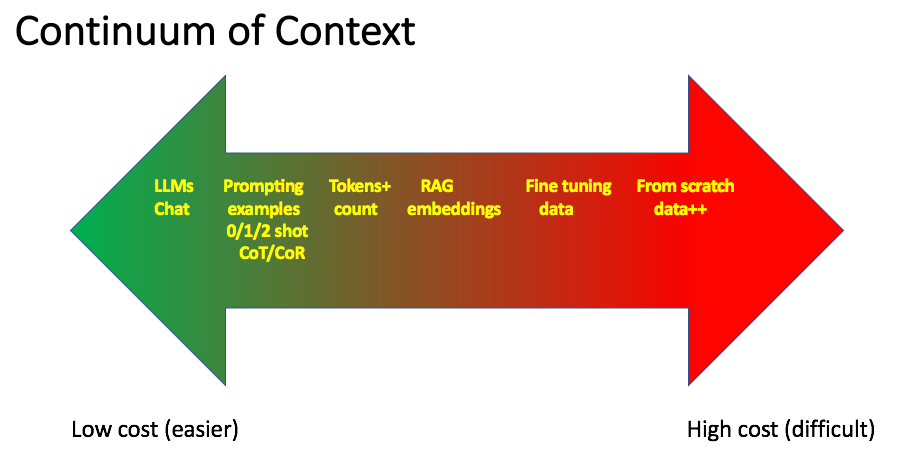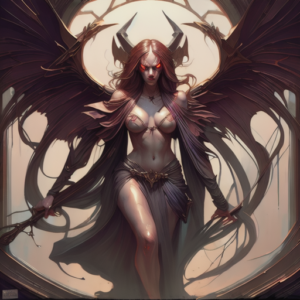Silent Conversations
“Silence is one of the great arts of conversation.” — Cicero
It’s been too many months since my last blog entry. I have remained silent in a field in which I have considerable experience and even more opinions. And it’s not because I have nothing to say. It’s because I have been busier than I have been for many years.
After years of developing expertise in NLP and Large Language Models (LLMs) on many hands-on projects, having found renewed passionate interest in music production and how emerging Generative AI tools can be used to create interesting new stuff, it appears that now, at least for the moment, the rest of the non-tech world has caught up. The commercial interest in GenAI has exploded just since I wrote my last blog entry! We can thank ChatGPT for that. Stable Diffusion too, for sure. But really, ChatGPT has kicked the door open. I hope it’s not just another AI Winter coming — it does seem different this time — but that’s always the case inter-bubble, isn’t it?
But it’s not just that I’ve been busy. I’ve become more reflective in the wake of the explosion of interest. I’ve know of previous AI Winters, but not first hand. This time, I’m not just watching. I’m involved. Deeply involved. So rather than just hold up the pompoms with the other cheerleaders, for the past few months, I’ve taken a step back to reflect. 
If you haven’t used ChatGPT, you’re obviously not reading this from Planet Earth in the year 2023CE (or AD, as the case may be). Perhaps you are reading this from some carved-in-stone post-apocalyptic time capsule ten thousand years from now, in what would be my future, in which case, ChatGPT was likely the source from which the AI sprang to utterly destroy human beings. A lot of AI-doomsayers make such claims today. I am not one of them. But we all fashion our own realities as we project our inner-hopes and terrors on the world, so God bless them.
For me, ChatGPT is an interesting and sometimes useful NLP tool. But AGI it ain’t. Nor is it the harbinger of deadly storms of misinformation and political subterfuge. 
In fact, since the release of ChatGPT, it has proven to be a promising tool for various applications, including customer support, content generation, and creative writing. Its ability to understand and generate human-like text just might revolutionize many industries and open up new possibilities for human-machine collaboration.
One of the areas where ChatGPT has made a significant impact is in the field of creative arts, particularly music production. As I mentioned earlier, I’ve developed a passionate interest in exploring how emerging Generative AI tools can be used to create interesting new music. With the advancements in technology, AI models like ChatGPT have become useful aids for musicians and producers.
Using ChatGPT, musicians can now generate melodies, harmonies, and even lyrics, providing endless sources of inspiration. This has sparked a wave of experimentation in the music industry. Artists are no longer limited by their own creativity or the time it takes to come up with new ideas. With the assistance of AI, they can explore uncharted territories and push the boundaries of their artistic expression.
However, despite the immense potential of AI in creative fields, there have been concerns raised about the impact it may have on human creativity and the authenticity of artistic expression. Some argue that relying too heavily on AI-generated content could lead to a lack of originality and a loss of human touch. While these concerns are valid, I believe that AI ought to be seen as a tool that enhances human creativity rather than replacing it.
AI models like ChatGPT are not creative beings themselves; they are trained on vast amounts of data and learn to mimic human-like responses. They lack intention, emotions, and true understanding. It is the human who provides the vision, perspective, and emotional depth, infusing their unique experiences and perspectives into the AI-generated content. The technology acts as a collaborator, a source of inspiration, and a catalyst for innovation.
Moreover, AI-generated content is often used as a starting point or a stepping stone for artists to build upon. It serves as a foundation that sparks new ideas and enables artists to explore new directions. It is up to the artist to shape, refine, and infuse their personal touch into the AI-generated material, transforming it into something truly unique and expressive.
Besides, with all the hype around GenAI, when you get past some of the clever conversations and interesting possibilities, the fact of the matter is there are so many gotchas when it comes to legalities, hallucinations, and inconsistent results. When it comes to a practical use of GenAI in real life applications, we have not even scratched the surface.
Before we can begin to rely on GenAI to the same extent we might rely on an operating system or a programming language as a foundation for applications, we have miles to go before we nod off. We need to get very practical. And that, in fact, has been the nexus of my reflective state of the past several months: Practical GenAI.
I have a lot to say about that, which I will be sharing soon. For the moment let me just say this: Context is everything, and when it comes to GenAI, there is a continuum of that context we, as practitioners, must understand and master. When it comes to LLMs, at least today, that continuum looks something like this:

As with any transformative technology, there will always be challenges and ethical considerations to navigate. It is crucial to approach AI with a critical and thoughtful mindset, understanding its limitations and potential biases. But in the end, the big question that has yet to be resolved is that of practicality. Can Generative AI serve a practical role in future software development? Or is it just a toy? A fun thing to play with, not even coming close to deserving the hype it now boasts. Responsible use of AI technology requires ongoing discussions, collaborations, and the development of ethical frameworks to ensure that it aligns with our values and serves humanity’s best interests, but it also requires a sensible view of practical use.
Is a big winter coming? The AI-doomsayers say yes, but that winter will be due to the AI that destroys civilization — the sort of winter that follows nuclear devastation. Others say we can expect yet another AI winter after such a tidal wave of hype. This ain’t AI’s first rodeo, and no how matter how good the cowboy, he’s gonna get throw’d eventually.
 ChatGPT and similar AI models have played a significant role in expanding the expectations for human creativity, both for good and evil. Rather than fearing their potential and demand government regulation, or pop the champagne corks to celebrate the dawn of an new age of enlightenment, we should embrace them tools that might amplify our creative abilities and open up new avenues for exploration, with an eye on practical use cases. By leveraging the power of AI in collaboration with human ingenuity, we just might shape a future where technology and creativity coexist harmoniously, enhancing our collective creative potential while avoiding the darkest of our angels.
ChatGPT and similar AI models have played a significant role in expanding the expectations for human creativity, both for good and evil. Rather than fearing their potential and demand government regulation, or pop the champagne corks to celebrate the dawn of an new age of enlightenment, we should embrace them tools that might amplify our creative abilities and open up new avenues for exploration, with an eye on practical use cases. By leveraging the power of AI in collaboration with human ingenuity, we just might shape a future where technology and creativity coexist harmoniously, enhancing our collective creative potential while avoiding the darkest of our angels.
Leave a Reply